Life in a Day is a crowdsourced drama/documentary film comprising an arranged series of video clips selected from 80,000 clips submitted to the YouTube video sharing website, the clips showing respective occurrences from around the world on a single day, 24 July 2010.
| Life in a Day | |
|---|---|
Theatrical release poster | |
| Directed by | Kevin Macdonald |
| Produced by | Liza Marshall |
| Music by | Harry Gregson-Williams Matthew Herbert |
| Edited by | Joe Walker |
Production company | Scott Free Productions YouTube, Inc. LG Corp |
| Distributed by | National Geographic Films |
Release date |
|
Running time | 95 minutes |
| Country | United Kingdom United States |
| Language | English Italian Japanese German Spanish Indonesian Balinese Portuguese Ukrainian Vietnamese Creole Catalan Dutch Bengali Masai Hindi Arabic Quechua Russian Tamil |
| Box office | $252,788 |
The film is 94 minutes 53 seconds long and includes scenes selected from 4,500 hours of footage in 80,000 submissions from 192 nations. The completed film debuted at the Sundance Film Festival on 27 January 2011 and the premiere was streamed live on YouTube. On 31 October 2011, YouTube announced that Life in a Day would be available for viewing on its website free of charge, and on DVD.
Screenplay
The film was produced by Scott Free Productions and the YouTube video sharing site. The film was distributed by National Geographic Films. The visual effects were produced by Lip Sync Post.
The film was the creation of a partnership among YouTube, Ridley Scott Associates and LG electronics, announced on 6 July 2010. Users sent in videos supposed to be recorded on 24 July 2010, and then Ridley Scott produced the film and edited the videos into a film with Kevin Macdonald and film editor Joe Walker, consisting of footage from some of the contributors. All chosen footage authors are credited as co-directors.
The film's music was written by composer and producer Harry Gregson-Williams, along with Matthew Herbert. The film's opening song, written by Herbert, was performed by English singer-songwriter Ellie Goulding. The film also features the song "Jerusalem" by Kieran Leonard and "Future Prospect" by Biggi Hilmars.
Macdonald told The Wall Street Journal that the project was initially conceived as a way to commemorate the fifth birthday of YouTube, and that he wanted to "take the humble YouTube video, ... and elevate it into art." Editor Joe Walker said that as he understood it, the concept for the crowdsourced documentary came from Ridley Scott's production company "Scott Free U.K." and from YouTube, while Macdonald explained more specifically that "the inspiration for me was a British group from the 1930s called the Mass Observation movement. They asked hundreds of people all over Britain to write diaries recording the details of their lives on one day a month and answer a few simple questions. ... These diaries were then organised into books and articles with the intention of giving voice to people who weren't part of the "elite" and to show the intricacy and strangeness of the seemingly mundane."
Macdonald began his "Around the world in 80,000 clips" article in The Guardian by posing the questions, "What do you love? What do you fear? What's in your pocket?" and explaining that "one day last summer, I asked ordinary people around the world to answer those three questions and spend a day filming their lives." The 80,000 individual clips received amounted to 4,500 hours of electronic footage. Macdonald explained that about 75% of the film's content came from people contacted through YouTube, traditional advertising, TV shows, and newspapers; the remaining 25% came from cameras sent out to the developing world, Macdonald pointing out "It was important to represent the whole world." At a reported cost of £40,000, "we did resort to snail mail for sending out 400 cameras to parts of the developing world – and getting back the resulting video cards." Macdonald later remarked that he regretted not sending out a far smaller number of cameras but providing training in camera operation and desired type of content: "Naively, I hadn't realised how alien, not only the concept of a documentary is to a lot of people (in the developing world), but also the idea that your own opinions are worth sharing."
Macdonald expressed to The Wall Street Journal that the film "could only be made in the last five years because ... you can get enough people who will have an understanding of how to shoot something." Walker told Wired magazine's Angela Watercutter that the film "couldn't have been made without technology. Ten years ago it would've been impossible." Macdonald explained that YouTube "allowed us to tap into a pre-existing community of people around the world and to have a means of distributing information about the film and then receiving people's 'dailies.' It just wouldn't have been organizationally or financially feasible to undertake this kind of project pre-YouTube."
The filmmaking team "used YouTube's ability to collect all of this material and then we had this sort of sweatshop of people, all multilingual film students, to sift through this material. It couldn't have been done any other way. Nobody had ever done a film like this before, so we had to sort of make it up as we went along." "To put (the 4500 hours of raw footage) in context, I just cut a feature film for Steve McQueen and there's 21 hours of for that."
Walker, whose team edited the whole film over seven weeks, remarked to Adam Sternbergh of The New York Times that "The analogy is like being told to make Salisbury Cathedral, and then being introduced to a field full of rubble. You have to start looking for buttresses and things that connect together." Walker indicated that a team of roughly two dozen researchers, chosen both for a cinematic eye and proficiency with languages, watched, logged, tagged, and rated each clip on a scale of one to five stars. Walker remarked that "the vast amount of material was two stars," and that he and director Kevin Macdonald reviewed the four-star and five-star rated clips.
In addition to the star rating system, the editing/selecting team also organised the 80,000 clips according to countries, themes and video quality as part of the selection process, and further had to convert from 60 different frame rates to make the result cinematically acceptable. All the logging and researching was done using the CatDV media asset management software.
Macdonald said that the film focused on a single day "because a day is the basic temporal building block of human life—wherever you are," with Walker adding that the particular day, 24 July 2010, was chosen because it was the first Saturday after the World Cup.
Concerning the chronology of the film and the order of the clips, Macdonald explained that he let the 300 hours of "best bits" tell him what the themes and structure of the film should be, likening the material to a Rorschach test—"you will see in it what you want to see in it." Joe Walker further explained that "We always wanted to have a number of structures, so it's not just midnight to midnight, but it's also from light to dark and from birth to death. ... bashing things together and making them resonate against each other and provoking thought."
Macdonald said he saw the movie "as a metaphor of the experience of being on the Internet. ... clicking from one place to another, in this almost random way…following our own thoughts, following narrative and thematic paths." Betsy Sharkey wrote in the Los Angeles Times that "this fast-paced documentary is shaped as much by Internet savvy as traditional filmmaking, which doesn't make the experience of it any less satisfying, or the implications any less provocative." "The story is told through the voices of the contributors, but mostly it's the images that do the heavy lifting."
Macdonald explained that the film "doesn't have a traditional story or a traditional narrative, but it has thematic movement…and ... recurring characters." He praised certain specific contributions, including "the most technically amazing skydiving shot I have ever seen in any film" and "a hand going up to a window pane and picking a fly off and filming the hand walking through the house and letting the fly go—and you see the fly take off in the distance." Asked if there any particular submission crystallised the film's theme, Macdonald cited "the family who had been going through cancer." More generally, Macdonald praised the immediacy that a handycam permits.
Ian Buckwalter of Washingtonian magazine said that "the familiar beats of the day (were) cut together to show that we're actually far more similar than we are different." The Washington Post's Michael O'Sullivan similarly noted that "the people whose lives form the spine of Life feel familiar... Their hopes and joys, disappointments and fears are our own." Liz Braun, writing in the Toronto Sun, said that "The overall sense of the project appears to be: It's good to be alive. ... According to the film, there are things that divide us as humans, but far more things that unite us." Toronto Star critic Peter Howell was in accord, observing that the "film shows things (what) billions of us do every day, perhaps thinking that we are somehow alone in our pursuits. Yet we couldn't be more connected." However, The Boston Globe's Tom Russo gave director "Macdonald and crew credit for picking out good, clear, telling contrasts, and not sweating potential heavy-handedness," citing contrasts between "one smug contributor pull(ing) a set of Lamborghini keys from his pocket, ... then mov(ing) on to ragged-looking Third Worlders amusedly scoffing at the idea that they'd have anything in their pockets," and a Westerner "quietly worries about losing his hair, while an older Afghan man quietly worries about getting through the day alive."
Sharkey described the progression of the film: "Beginning with videos that start pre-dawn then moving through morning, afternoon and evening, ... the rituals that define a day begin to emerge. Beyond an extraordinary range of cultures, terrain and styles reflected, which are captivating on their own, the film stands as a stirring reminder of how ordinary and yet eclectic humanity can be. If "Life in a Day" is any measure, we are a quirky, likeable, unpredictable and yet predictable bunch."
Yumi Goto of TIME LightBox remarked that "the most striking aspect of this documentary is that it's the first crowdsourced, user-generated content to hit the big screen." O'Sullivan said that, being "alternately funny, scary, boring, moving, amateurish and gorgeous, it is a pretty spectacular thing: a crowdsourced movie that manages to feel singular and whole." Anthony Benigno wrote in Filmcritic.com that the film "is pretty much the first social-media movie ever made."
The New York Times' Adam Sternbergh wrote that "the film's most memorable moments are the ones of unexpected intimacy. ... The film aims to tell the story of a planet, but it's the vulnerability of these individual moments, contributed as part of a larger project, that lingers." The Los Angeles Times' Betsy Sharkey wrote that "The fact that we all experienced that day is part of what gives the documentary an unusual kind of relatability."
Sharkey characterised the film as being "the most hopeful yet from Macdonald, a director who's made his reputation by digging into the more corrupted and conflicted side of human nature with One Day in September, his Oscar-winning documentary on the 1972 Munich massacre of Israeli Olympic athletes... (T)he lightness (Macdonald has) unearthed in "Life in a Day" has an earthy and at times euphoric appeal."
Life in a Day has received generally positive reception from film critics. Rotten Tomatoes reports that 82% of 52 critics have given the film a positive review, with a rating average of 7.1 out of 10. Metacritic gave the film a rating average of 58/100, indicating "mixed or average reviews".
Helen O'Hara from Empire
Watch movie Life In A Day 2011 Film online on Amazon
Watch movie Life In A Day 2011 Film online
Watch The Movie On PrimeAayee Milan Ki Raat Full HD Movie Download
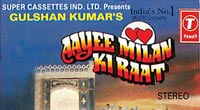
Mulzim Full HD Movie Download
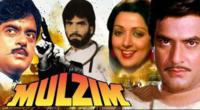
Aarop Full HD Movie Download
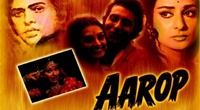
Babul Ki Galiyan Full HD Movie Download
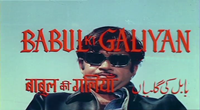
Duet Full HD Movie Download
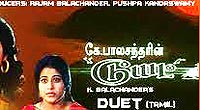
Maleyali Jotheyali Full HD Movie Download
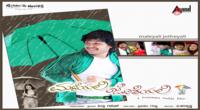
Romeo Full HD Movie Download
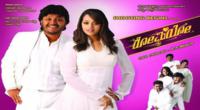
Mata Da Darbar Full HD Movie Download
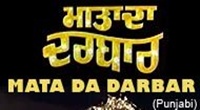
Just Math Mathalli Full HD Movie Download
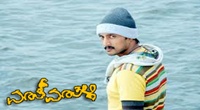
Moggina Manasu Full HD Movie Download

Bhagvat Geeta Full HD Movie Download
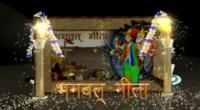
Phoenix The Warrior Full HD Movie Download
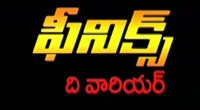
Poikkal Kudhirai Full HD Movie Download
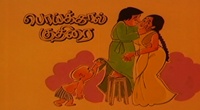
Velaikkaran Full HD Movie Download
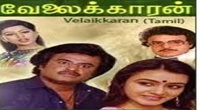
December Pookal Full HD Movie Download
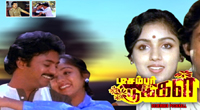
Bharath Bandh Full HD Movie Download
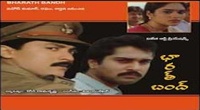
Kali Kaalam Full HD Movie Download
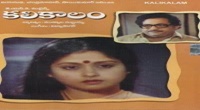
Koduku Full HD Movie Download
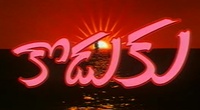
Gudhachari No.1 Full HD Movie Download
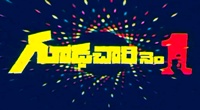
Neal n Nikki Full HD Movie Download

Silsila Full HD Movie Download

Download latest Movie from bollywood
- 1> baaghi 3
- 2> THE SKY IS PINK MOVIE FULL STORY AND REVIEW
- 3> Luka Chuppi
- 4> TO ALL THE BOYS I’VE LOVED BEFORE
- 5> Kabir Singh
- 6> Street Dancer 3D
- 7> Simmba
- 8> Gone Girl
- 9> The Girl Who Lived
- 10> Ludo
- 11> DILWALE DULHANIA LE JAYENGE
- 12> GUILTY
- 13> The Godfather
- 14> Adventures of Rusty
- 15> Sooryavanshi
- 16> Satyameva Jayate 2
- 17> Thappad
- 18> Bhool Bhulaiyaa 2
- 19> KGFChapter 2
- 20> Mardaani 2
- 21> Pinjar
- 22> Shivaji maharaj
- 23> Ek Villian 2
- 24> Hungama 2
- 25> Divergent
- 26> Mumbai Saga
- 27> The Internship
- 28> HIT (telugu)
- 29> Panga
- 30> The perfect date
- 31> 16 December
- 32> Gopala Gopala (Telugu)
- 33> Brahmastra
- 34> Gangubai Kathiawadi
- 35> Manmadhudu
- 36> Nenu local
- 37> Mahanati
- 38> Shatamanam bavathi
- 39> Lagaan
- 40> After
- 41> MOM
- 42> Shamshera
- 43> Raguvaran BTech
- 44> Khakee
- 45> The villain
- 46> OM
- 47> Mr. perfect
- 48> Bueatifull mind
- 49> Hichki
- 50> Gabbar Singh
- 51> Jogi
- 52> Before Sunrise
- 53> Before Sunset
- 54> Before Midnight
- 55> The Big Bull
- 56> Top Gun: Maverick
- 57> The Purge
- 58> The Sky is Pink
- 59> Laxmmi Bomb
- 60> Sadak 2
- 61> Sufna
- 62> Prithviraj
- 63> PK
- 64> Coolie No 1(2020)
- 65> Black Widow
- 66> Dear Zindagi
- 67> Dil Bechara
- 68> PHIR HERA PHERI
- 69> WAR
- 70> Dostana
- 71> RRR: Roudram Ranam Rudhiram
- 72> Maidan
- 73> Dabbang 3
- 74> Chhalaang
- 75> life as we know it
- 76> SherShaah
- 77> Sandeep Aur Pinky Faraar
- 78> Event Horizon
- 79> 83
- 80> Radhe: Your Most Wanted Bhai
- 81> Gunjan Saxena: The Kargil Girl
- 82> Mr India
- 83> Vivah
- 84> Anokha Bandhan
- 85> Ghost
- 86> Bhoot: Part One - The Haunted Ship
- 87> Haseen Dilruba
- 88> Laal Singh Chaddha
- 89> Qismat
- 90> Rajput
- 91> Drive
- 92> Dil Chahta Hai
- 93> Dil Ki Baazi
- 94> Dil Ka Rishta
- 95> Teesri Manzil
- 96> Dil
- 97> Love Aaj Kal
- 98> Khaali Peeli
- 99> Bunty Aur Babli 2
- 100> Atrangi Re
- 101> Gulabo Sitabo
- 102> Jodi
- 103> Suraj Pe Mangal Bhari
- 104> Deewana
- 105> Attack
- 106> Sardar Udham Singh
- 107> Toofan
- 108> THE LOVEBIRDS
- 109> Jersey
- 110> Ginny Weds Sunny
- 111> Thalaivi
- 112> Shiddat
- 113> Angels vs Zombies
- 114> Koi Mil Gya
- 115> Thank God
- 116> Bhuj: The Pride of India
- 117> Hum Aapke Hain Kaun
- 118> The Platform
- 119> Bird Box
- 120> Roohi Afzana
- 121> Torbaaz
- 122> Nikamma
- 123> World War Z
- 124> Extraction
- 125> Train to Busan
- 126> Life of Pi
- 127> SHAADI MEIN JROOR AANA
- 128> Himmat Aur Mehnat
- 129> To All The Boys: P.S. I Still Love You
- 130> Mimi
- 131> Good Newwz
- 132> Shubh Mangal Zyada Saavdhan
- 133> Raabta
- 134> Harry Potter and the Philosopher's Stone
- 135> Harry Potter and the Chamber of Secrets
- 136> Chhapaak
- 137> War of the Worlds
- 138> Harry Potter and the Prisoner of Azkaban
- 139> Harry Potter and the Goblet of Fire
- 140> MURDER MYSTERY
- 141> Shakuntala Devi
- 142> Bachchan Pandey
- 143> Jayeshbhai Jordar
- 144> Sheer Qorma
- 145> Saina
- 146> 'O' Pushpa I hate tears
- 147> Kedarnath
- 148> MS Dhoni The Untold Story
- 149> Chhichhore
- 150> Badhaai Ho
- 151> Unstoppable
- 152> Oz the Great And Powerful
- 153> The Girl on the Train
- 154> Haathi Mere Saathi 2020
- 155> The Conjuring: The Devil Made Me Do It
- 156> Gandhi Se Pehle Gandhi
- 157> The Song of Scorpions
- 158> Srimanthudu
- 159> Hello Guru Prema Kosame
- 160> Beauty and The Beast
- 161> Black Panther
- 162> Charlie and the Chocolate Factory
- 163> Bole Chudiyan
- 164> Fidaa
- 165> Duvvada Jagannadham
- 166> Bruce Lee: The Fighter
- 167> Hyper
- 168> Yaara
- 169> Red (2020)
- 170> Shivam
- 171> That Is Mahalakshmi
- 172> Nishabdham
- 173> Aashram 2020 web series
- 174> Laxmii
- 175> Mismatched
- 176> STUDENT OF THE YEAR 2
- 177> NAIL POLISH
- 178> Ramprasad Ki Tehrvi
- 179> KAAGAZ
- 180> 12 o Clock
- 181> The Power
- 182> bolo hau
- 183> Tribhanga
- 184> JAMUN
- 185> Madam Chief Minister
- 186> Maasaab
- 187> Aadhaar
- 188> Tanhaji
- 189> Bhaagi 3
- 190> Bhootnath
- 191> MALANG
- 192> Jai Mummy Di
- 193> Haathi Mere Saathi 2021
- 194> Shakeela
- 195> Unpaused
- 196> Annayya
- 197> Vamsoddharakudu
- 198> Mrugaraju
- 199> Narasimha Naidu
- 200> Sankranti
- 201> Manasu Maata Vinadhu
- 202> Anjaane
- 203> Apaharan
- 204> Bachke Rehna Re Baba
- 205> Bewafaa
- 206> Roohi
- 207> Radhe
- 208> Zindagi Khoobsoorat Hai
- 209> Yeh Mohabbat Hai
- 210> Yeh Kya Ho Raha Hai?
- 211> The Tomorrow War
- 212> DehradunDiary
- 213> Meri Shaadi Karaoo
- 214> Matruu Ki Bijlee Ka Mandola
- 215> No One Killed Jesica
- 216> Aag Ka Goola
- 217> Eight Million Dollars
- 218> Three Hundred
- 219> Cats and Dog
- 220> Decoy
- 221> Gold Rush
- 222> You Have Got Mail
- 223> Final Destination three
- 224> Tofan
- 225> Jungle
Request for Download movie Life In A Day 2011 Film
- Bollywood movies
- Latest Bollywood movies
- Download all bengali movies
- Download all bhojpuri movies
- Download all english movies
- Download all gujarati movies
- Download all hindi movies
- Download all kannada movies
- Download all malayalam movies
- Download all marathi movies
- Download all oriya movies
- Download all punjabi movies
- Download all tamil movies
- Download all telugu movies
- Bollywood action movies
- Bollywood adventure movies
- Bollywood animation movies
- Bollywood classical movies
- Bollywood comedy movies
- Bollywood crime movies
- Bollywood devotional movies
- Bollywood documentary movies
- Bollywood drama movies
- Bollywood family movies
- Bollywood fantasy movies
- Bollywood historical movies
- Bollywood history movies
- Bollywood horror movies
- Bollywood musical movies
- Bollywood mystery movies
- Bollywood mythological movies
- Bollywood patriotic movies
- Bollywood romance movies
- Bollywood romantic movies
- Bollywood sci-fi movies
- Bollywood social movies
- Bollywood spiritual movies
- Bollywood sports movies
- Bollywood suspense movies
- Bollywood thriller movies
- Bollywood war movies
- Hot actress list
- Hot gujarati actress list
- Hot tamil actress list
- Hot bhojpuri actress list
- Hot assam actress list
- Hot bihari actress list
- Hot jammu and kashmir actress list
- Hot gujarati actress list
- Hot haryana actress list
- Hot konkani actress list
- Hot marathi actress list
- Hot odia actress list
- Hot punjabi actress list
- Hot rajasthani actress list
- Hot kannada actress list
- Hot malayalam actress list
- Hot telugu actress list
- Hot tulu actress list
- Hot Actress list from Indian city
- Hot actress list from ahmedabad
- Hot actress list from alappuzha
- Hot actress list from bangalore
- Hot actress list from bangalore
- Hot actress list from bhopal
- Hot actress list from chandigarh
- Hot actress list from chennai
- Hot actress list from guwahati
- Hot actress list from hyderabad, india
- Hot actress list from indore
- Hot actress list from jaipur
- Hot actress list from kannur
- Hot actress list from kochi
- Hot actress list from kolkata
- Hot actress list from kollam
- Hot actress list from kottayam
- Hot actress list from kozhikode
- Hot actress list from lucknow
- Hot actress list from madurai
- Hot actress list from mangalore
- Hot actress list from mumbai
- Hot actress list from mysore
- Hot actress list from new delhi
- Hot actress list from patna
- Hot actress list from pune
- Hot actress list from thiruvananthapuram
- Hot actress list from thrissur
- Hot actress list from tiruchirappalli
- Hot actress list from vijayawada
- Hot actress list from visakhapatnam
- All Bollywood Movies
- Bollywood Celeb
- >Art Director
- >Audiography
- >Background Music
- >Banner
- >Choreographer
- >Cinematographer
- >Costume Designer
- >Dialogue Writer
- >Director
- >Distributor
- >Editor
- >Executive Producer
- >Hair Stylist
- >Lyricist
- >Music Director
- >Photographer
- >Playback Singers
- >Presenter
- >Producer
- >Production Company
- >Production Designer
- >Screenplay
- >Singer
- >Sound
- >Actor
- >Story Writer
- >Studio
- >Video Director
- >Miscellaneous
- >Publicity (pro)
- >Web Creator
- >Production Labs
- >Publicity Design
- >Publicity Stills
- >Writer
- >Miscellaneous Artists
- >Visual Effects
- >Reporter
- >Music Company
- >Shooting Studios
- >Picturised On
- >Line Producer
- >Co Producer
- >Asst Director
- >Casting Director
- >Cinematography
- >Choreography
- >Dialouge
- >Editing
- >Lyrics
- >Music
- >Story
- >Playback Singer Female
- >Playback Singer Male
- >Actor In A Comic Role (male/female)
- >Child Artiste
- >Ensemble Cast
- >Actor Popular Choice (male)
- >Actor Popular Choice (female)
- >Sa Re Ga Ma Pa Song Of The Year
- >Actor In Supporting Role
- >Actress In Supporting Role
- >Actor In Leading Role
- >Art Direction
- >Actress In Leading Role
- >Sound Recording
- >Costume Design
- >Special Effects
- >Action
- >Actor In A Negative Role
- >Lifetime Achievement Award
- >Cinematic Exellence (director)
- >Cinematic Exellence (male)
- >Cinematic Exellence (female)
- >International Male Icon
- >International Female Icon
- >Actor In A Supporting Role (male)
- >Actor In A Supporting Role (female)
- >Actor In A Comic Role
- >Playback Singer (male)
- >Playback Singer (female)
- >Most Promising Debut (female)
- >Most Promising Debut (male)
- >Most Promising Director
- >Sound Design
- >Lifetime Jodi
- >Marketed Film
- >Jury Award For Best Actor
- >Jury Award For Best Actress
- >Jury Award For Best Film
- >Jury Award For Best Director
- >Playback Singer(male)
- >Lifetime Acheivement Award (male)
- >Excellence Award
- >Jodi Award
- >Performer Of The Year
- >Presented By
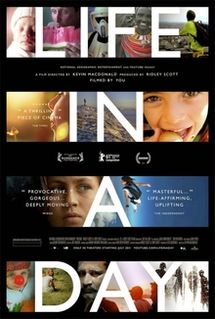 Story of movie Life In A Day 2011 Film :
Story of movie Life In A Day 2011 Film : 